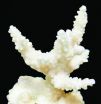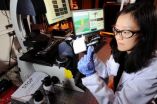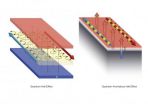(Press-News.org) PHILADELPHIA, Aug. 19, 2012 — Using information about the unique mating practices of the male malaria mosquito ― which, unlike any other insect, inserts a plug to seal its sperm inside the female ― scientists are zeroing in on a birth-control drug for Anopheles mosquitoes, deadly carriers of the disease that threatens 3 billion people, has infected more than 215 million and kills 655,000 annually.
They reported today at the 244th National Meeting & Exposition of the American Chemical Society on development of an approach for screening substances that could prevent formation of the plug, thus preventing mosquitoes from reproducing and spreading malaria.
Richard H. G. Baxter, Ph.D., professor of chemistry at Yale University, who presented the report, described the search for a new birth-control strategy for mosquitoes. Anopheles gambiae mosquitoes mate in airborne swarms, but only females bite and feed on blood from people ― the bite that transmits the malaria parasite to humans. To ensure mating success, an Anopheles male produces a special "mating plug" to seal its sperm inside the female's mating chamber. The Yale researchers purified the specific enzyme, a transglutaminase, responsible for coagulating another protein called Plugin within the male's seminal fluid to form the plug. They went on to purify the Plugin protein and reconstitute the coagulation reaction in the lab, setting the stage to search for chemicals that inhibit this reaction.
The technology is based on a discovery about the plug in 2009 by Flaminia Catteruccia, Ph.D., then at Imperial College London. Catteruccia's research detailed the biochemical composition of the plug, identified the transglutaminase enzyme and showed that blocking the enzyme prevents females from storing sperm to fertilize their eggs. Catteruccia, now at the Harvard School of Public Health, is collaborating with Baxter and his team at Yale to translate that knowledge into technology to put a dent in the population of malaria mosquitoes.
"We have completed the necessary groundwork to start screening for chemicals that inhibit the enzyme," Baxter explained. "I think that there's a good chance that we will find a compound because there are many existing compounds that inhibit other transglutaminases. Ideally, it would be a substance that could be fed to males, sterilizing them so that they mate but no offspring result. It's a well-established biological insect-control technology called the sterile insect technique and has been used for decades."
The sterile insect technique was first used to control the screwworm fly in the southern United States and other areas. The screwworm fly was once responsible for hundreds of millions of dollars in losses to the cattle industry and consumers. The approach is used against tsetse flies in Africa that transmit sleeping sickness and can be effective against mosquitoes, which mate only once or twice in their lifetime. Male mosquitoes would be reared under controlled conditions, fed a transglutaminase inhibitor and released to mate with wild females, reducing the population without the use of insecticides.
The new approach may help to deploy the sterile insect technique against mosquitoes by overcoming previous logistical and environmental concerns. "By developing a chemical that is specific to the Anopheles mosquito and applied in a contained environment, we can minimize both cost and environmental impact," says Baxter. The technology is compatible with other methods such as genetic modification, pioneered by the British firm Oxitec.
The sterile insect technique is a different approach than traditional malaria control strategies, such as the indoor spraying of insecticides and the use of insecticide-treated bed nets. "Mosquitoes are adapting to the traditional control measures," warns Baxter. "They are becoming resistant to the commonly used insecticides such as DDT and pyrethroids, and they are avoiding bed nets by biting during the day and out-of-doors. The sterile insect technique moves us away from trying to deliver chemicals to female mosquitoes by spreading them around people. Instead, we feed a chemical to the male, and he finds the females for us."
###The scientists acknowledge support from the National Institute of Allergy and Infectious Diseases (NIAID Career Development Award, K22AI085112-01).
The American Chemical Society is a nonprofit organization chartered by the U.S. Congress. With more than 164,000 members, ACS is the world's largest scientific society and a global leader in providing access to chemistry-related research through its multiple databases, peer-reviewed journals and scientific conferences. Its main offices are in Washington, D.C., and Columbus, Ohio.
To automatically receive news releases from the American Chemical Society, contact newsroom@acs.org.
Note to journalists: Please report that this research was presented at a meeting of the American Chemical Society.
Abstract
Male Anopheles mosquitoes secrete a specific transglutaminase (AgTG3) into their seminal fluids. AgTG3 crosslinks a subrate protein called Plugin, producing a gelatinous "mating plug" that is important for proper sperm storage by the female. We have reconstituted this reaction in vitro through heterologous expression, purification and biophysical analysis of both enzyme and substrate protein. Activity of AgTG3 is Ca2+- but not GTP-dependent, and several crosslinked Plugin peptides were identified by mass spectrometry indicating a putative site of interaction between Plugin monomers. Formation of the A. gambiae mating plug is a potential target for controlling mosquito populations via a "sterile insect technique."
Meddling with male malaria mosquito 'mating plug' to control an epidemic
2012-08-20
ELSE PRESS RELEASES FROM THIS DATE:
Inspired by genetics, chemistry finally takes hold of its own code
2012-08-20
Stefan Matile opts for sincerity. For him, if organic chemistry is often fond of simplifying its functional systems, it is because it is mostly impossible for it to construct and manage molecular architectures as complex as those produced with tremendous efficiency in nature. "It's a fact", says the UNIGE professor and NCCR Chemical Biology member, "that we are far from being able to match the genius of nature."
Where the complexity arises
The specialist attributes the genetic code to this genius of nature. "It is rather simple because it is based on four foundations—adenine, ...
Improving water quality can help save coral reefs
2012-08-20
Research from the University of Southampton and the National Oceanography Centre, Southampton has found that an imbalance of nutrients in reef waters can increase the bleaching susceptibility of reef corals.
Corals are made up of many polyps that jointly form a layer of living tissue covering the calcareous skeletons. They depend on single-celled algae called zooxanthellae, which live within the coral polyps.
The coral animal and the associated zooxanthellae depend on each other for survival in a symbiotic relationship, where the coral supplies the algae with nutrients ...
Artificial intelligence helps detect subtle differences in mutant worms
2012-08-20
Research into the genetic factors behind certain disease mechanisms, illness progression and response to new drugs is frequently carried out using tiny multi-cellular animals such as nematodes, fruit flies or zebra fish.
Often, progress relies on the microscopic visual examination of many individual animals to detect mutants worthy of further study.
Now, scientists have demonstrated an automated system that uses artificial intelligence and cutting-edge image processing to rapidly examine large numbers of individual Caenorhabditis elegans, a species of nematode widely ...
A new route to dissipationless electronics
2012-08-20
A team of researchers at RIKEN and the University of Tokyo has demonstrated a new material that promises to eliminate loss in electrical power transmission. The surprise is that their methodology for solving this classic energy problem is based upon the first realization of a highly exotic type of magnetic semiconductor first theorized less than a decade ago - a magnetic topological insulator.
Development of energy saving technologies is one of the central pursuits of modern science. From advancing alternative energy resources like wind and solar power to improving the ...
The wasp that never cries wolf
2012-08-20
European paper wasps (Polistes dominula) advertise the size of their poison glands to potential predators, finds a new study published in BioMed Central's open access journal Frontiers in Zoology. The brighter the colour, the larger the poison gland.
Aposematism is used by many different animals to warn potential predators that they are poisonous. Usually this takes the form of distinctive colouration or patterns which predators quickly learn to avoid. Paper wasps have conspicuous yellow and black patterns covering their bodies and researchers from University of Granada ...
Massachusetts butterflies move north as climate warms
2012-08-20
PETERSHAM, Mass. (August 19, 2012)---The authors of a Harvard study published today in Nature Climate Change gathered their data from an unlikely source—the trip accounts of the Massachusetts Butterfly Club. Over the past 19 years, the amateur naturalist group has logged species counts on nearly 20,000 expeditions throughout Massachusetts. Their records fill a crucial gap in the scientific record.
Once analyzed, the data show a clear trend. According to Greg Breed, lead author on the study and a post-doctoral fellow at the Harvard Forest in Petersham, Mass., "Over the ...
UCSB researchers demonstrate that 15=3x5 about half of the time
2012-08-20
(Santa Barbara, Calif.) — Computing prime factors may sound like an elementary math problem, but try it with a large number, say one that contains more than 600 digits, and the task becomes enormously challenging and impossibly time-consuming. Now, a group of researchers at UC Santa Barbara has designed and fabricated a quantum processor capable of factoring a composite number — in this case the number 15 — into its constituent prime factors, 3 and 5.
Although modest compared to a 600-digit number, the achievement represents a milestone on the road map to building a ...
Researchers assess stereotypes of immigrants and views on the impact of immigration
2012-08-20
DENVER — A new study led by the University of Cincinnati examines stereotypes of immigrants from four global regions and measures opinions of the impact of immigration on U.S. society. The researchers say their findings provide the most solid evidence yet that perceptions of the characteristics of Latin American immigrants in particular are strongly linked to beliefs about the impact of immigration, especially on unemployment, schools, and crime. The research will be presented at the 107th Annual Meeting of the American Sociological Association.
The study was conducted ...
Binge drinking college students are happier than their non-binge drinking peers
2012-08-20
DENVER — Why do some colleges have persistently high levels of binge drinking? It may be because, at these schools, binge drinking is associated with high status and binge drinkers are happier with their college social experience than their non-binge drinking peers, suggests new research to be presented at the 107th Annual Meeting of the American Sociological Association.
"Binge drinking is a symbolic proxy for high status in college," said Carolyn L. Hsu, co-author of the study and an associate professor of sociology at Colgate University. "It's what the most powerful, ...
Secondhand smoke impairs vital cough reflex in kids
2012-08-20
PHILADELPHIA (August 20, 2012) – New research from the Monell Center reveals that exposure to secondhand smoke decreases sensitivity to cough-eliciting respiratory irritants in otherwise healthy children and adolescents. The findings may help to explain why children of smokers are more likely to develop pneumonia, bronchitis and other diseases and also are more likely to experiment with smoking during adolescence.
"Cough protects our lungs from potentially damaging environmental threats, such as chemicals and dust. Living with a parent who smokes weakens this reflex, ...




